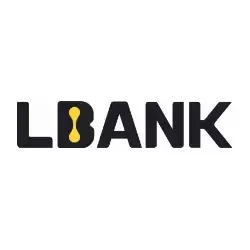 |
|
 |
|
 |
|
 |
|
 |
|
 |
|
 |
|
 |
|
 |
|
 |
|
 |
|
 |
|
 |
|
 |
|
 |
|
Cryptocurrency News Articles
Ethereum Activates Pectra Network Upgrade, Introducing Smart Accounts and Higher Staking Limits
May 08, 2025 at 03:01 am
On May 7, 2025, Ethereum activated its latest major network upgrade, Pectra. This update brings several key changes to the protocol,

On May 7, 2025, Ethereum completed its latest major network upgrade, Pectra, which brings several key changes to the protocol.
This update, which was smoothly activated at epoch 236,400, marks a significant step in improving the user experience, enhancing validator operations, and expanding scalability with new Ethereum Improvement Proposals (EIPs).
Pectra is also notable for its earlier setbacks, where bugs affected the Holesky and Sepolia test networks, but were quickly fixed by developers from different client teams, showcasing the strength of cooperation in the community.
Here's a closer look at the main EIPs included in the Pectra upgrade and their implications:
Smart Accounts and Account Abstraction (EIP-7702)
One of the most anticipated changes is EIP-7702, part of the broader account abstraction initiative. This proposal allows Ethereum wallets (EOAs) to function more like smart contracts.
Users can perform transactions with automated permissions, enabling actions like token approvals to occur directly in the transaction, and allowing for alternative payment methods for gas fees, such as ERC-20 tokens.
This feature is designed to create a smoother user experience by reducing frequent approval requests and wallet pop-ups, which can be cumbersome for users. It also allows developers to build dapps that feel more like Web2 applications on the blockchain.
However, this added functionality might introduce potential security risks. Malicious dapps could try to trick users into signing harmless-looking messages that would steal their wallets if they hold valuable NFTs or tokens.
Despite this, many in the community believe EIP-7702 is safe if used properly and is narrow enough to avoid major risks.
Those in favor of the EIP argue that it will make Ethereum more user-friendly and efficient, while opponents have concerns about increased complexity and potential misuse.
Ethereum Upgrade Simplifies Institutional Staking (EIP-7251 & EIP-7002)
Ethereum’s validator system also received important upgrades with EIP-7251, which increases the staking limit per validator from 32 ETH to 2,048 ETH.
This change is especially helpful for institutional validators who had to manage many smaller validators to handle large amounts of capital. Now, with the higher limit, they can combine operations, cutting costs and making management easier.
Additionally, EIP-7002 streamlines the process for staking withdrawals. Previously, validators had to wait over 13 hours to generate withdrawal credentials from staking service providers.
Now, validators can complete withdrawals in about 13 minutes and importantly, without needing a signed message from the provider, granting validators more control and reducing operational risk.
Pectra Upgrade Enhances Layer-2 Scalability (EIP-7691)
Further enhancing Ethereum’s scalability, EIP-7691 increases the number of data blobs that each block can support. These blobs are used by layer-2 rollup solutions, such as Optimism and Arbitrum, which depend on Ethereum for data.
With the main system handling more rollups by supporting more data blobs per block, it effectively cuts transaction fees and allows more users and activity to occur without clogging the main chain.
This change is a big step in making Ethereum's scaling system stronger for the future.
Moreover, EIP-6110 improves how Ethereum’s execution and consensus layers work together. Now, validator deposits appear directly in the execution-layer block, speeding up the onboarding process and reducing the need for indirect communication.
This small change makes data more efficient and strengthens Ethereum’s unified system.
Finally, while earlier bugs affected the Holesky and Sepolia test networks, developers have fixed these problems. As a result, the mainnet upgrade went smoothly, showing the cooperation and strength of Ethereum's client developers and the broader community.
The Pectra upgrade is bullish for Ethereum as it boosts scalability, improves user experience, and enhances institutional staking. Key features like smart accounts (EIP-7702), higher staking limits (EIP-7251), and more data capacity for layer-2s (EIP-7691) make Ethereum more efficient, user-friendly, and attractive to developers and investors, strengthening its ecosystem and long-term value.
Disclaimer:info@kdj.com
The information provided is not trading advice. kdj.com does not assume any responsibility for any investments made based on the information provided in this article. Cryptocurrencies are highly volatile and it is highly recommended that you invest with caution after thorough research!
If you believe that the content used on this website infringes your copyright, please contact us immediately (info@kdj.com) and we will delete it promptly.
-

-

- DOGE Does 38% Rebound and ADA Tests AI Integration: But Unstaked's Real AI Advantage Commands Attention!
- May 11, 2025 at 07:40 am
- Dogecoin (DOGE) has surged back into focus with a 38% rebound from its April lows, fueling talk of a potential rally toward $3.94. Meanwhile, Cardano (ADA) is turning heads with its AI-powered “Face Melting Net” testnet
-

- Analyst Sounds The Alarm: Buying This SHIB Killer Today Is Like Buying Dogecoin Right Before Elon Musk Started Promoting It
- May 11, 2025 at 07:35 am
- A top analyst warns that buying this SHIB killer, FloppyPepe (FPPE), now could mirror the explosive gains seen when Elon Musk first backed Dogecoin (DOGE).
-

-

-

- As SHIB Eyes a Bounce and Cardano Gains Developer Strength, Web3 ai's $2.6M Presale & 1747% ROI Steal the Spotlight
- May 11, 2025 at 07:30 am
- Guesswork often leads to missed chances and poor decisions. Right now, Shiba Inu is getting attention again with recovery signals. Cardano is also showing strength due to its rising developer activity.
-

-

- BlackRock Files Proposal to Allow In-Kind Creation and Redemption of Its iShares Ethereum Trust ETF (ETHA)
- May 11, 2025 at 07:25 am
- American investment firm BlackRock has filed a proposal with the US Securities and Exchange Commission that will allow the in-kind creation and redemption of its iShares Ethereum Trust ETF (ETHA).
-




























































